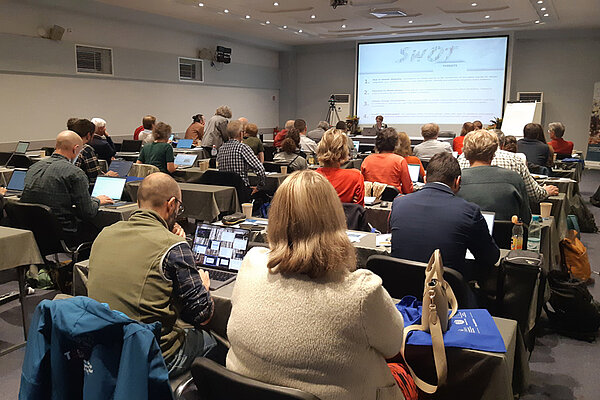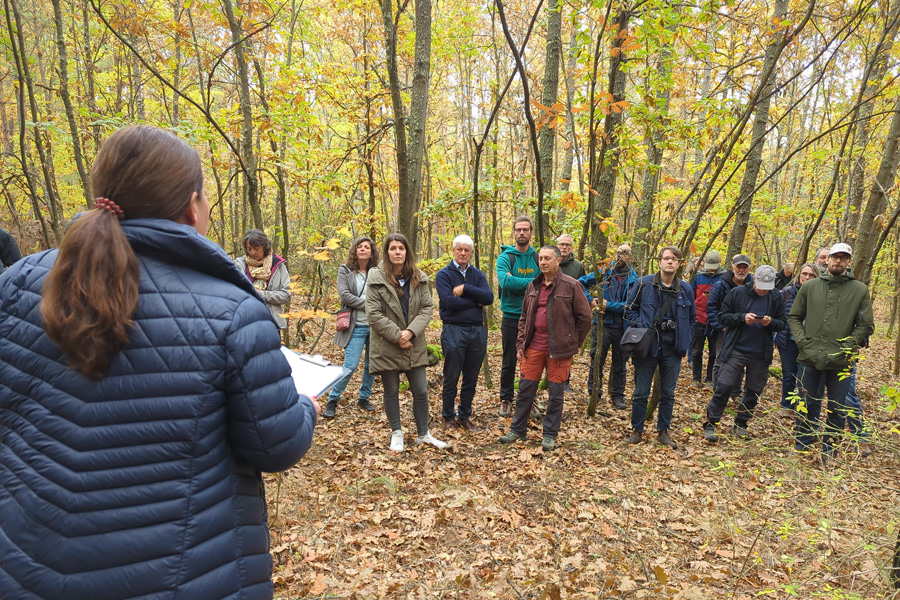Meeting venues must have vast corridors, because a relevant part of the action happens outside meeting rooms. The Moskva hotel of Sofia, venue of the third OptFORESTS Annual meeting, offers just that: large, quiet corridors with deep, comfortable sofas. That’s where an intense meeting around project’s Task 2.3 took place, between scientists Ben Brachi (INRAE), task leader, Christian Rellstab (WSL), Ivan Scotti (INRAE), and Andrea Modica, freshly hired as a post-doc by WSL, and formerly a PhD student at INRAE (yes, it’s a small world). The meeting was kind of foundational: all the research themes, that should keep these fellows (plus some others, including an additional postdoc to be hired soon) busy for the next few years, were laid out. The goals are ambitious: to start with, a detailed analysis of the genotype-environment relationships in white oaks, that will help identify loci contributing to adaptation to environment: climate change looms large in scientists’ minds, and the quatuor is hoping to find signals of adaptive response to it. This will—of course—require the analysis of a deluge of genomic data, but the team has another ace up the sleeve: by looking at how growth rings reacted to past droughts, they will be able to check whether the trees carrying adaptive genes are also those which showed better resilience to past stress—an elegant validation of the adaptive role of genes.

From hybridisation mysteries to future forest modelling
The scientists aim at testing an intriguing hypothesis: genes, allowing trees of cold-adapted species to adapt to heat and drought, would be shared with, and borrowed from, more Southern species, which are more adapted to drought. Here, the key player is one of the greatest mysteries of plant biology: the widespread occurrence of inter-specific hybridisation, that allows the continued generation of new genetic combinations, while species maintain their identity nonetheless (evolutionary biologists have come up with a Greek word to describe groups of interbreeding species, that sounds like the name of an architectural part of classical temples: the syngameon).
Once this is done, enter the other staple of evolutionary studies: modelling. Knowing that some gene variants have a positive (or negative) effect on adaptation to future, harsher environments, the team will model the genotypes of seedlings of currently extant trees, and predict their growth and survival in the future at multiple geographical locations.
They will even be able to predict the success of seeds generated by mixing the genes of different wild populations. This is what would happen if one carried out assisted gene flow, that is, the human-driven transfer of seed stock from one population to another, with the intent of easing the adaptation of the receiving population to the living conditions of the sending populations, such as, for example, making populations currently living in cooler conditions adapted to warmer ones.
This is a very rich research agenda. Will it fit within the project’s duration? What is sure is that time is of the essence: not only does OptFORESTS last only five years, with only two left to go, but climate change is pressing us hard to quickly find answers to crucial questions about the resilience of our forests.
This article was originally written by Ivan Scotti (INRAE, France), who contributes to the OptFORESTS project as a member of WP2, “Enhancing the diversity of FGR in use and conservation based on common garden trials.”
